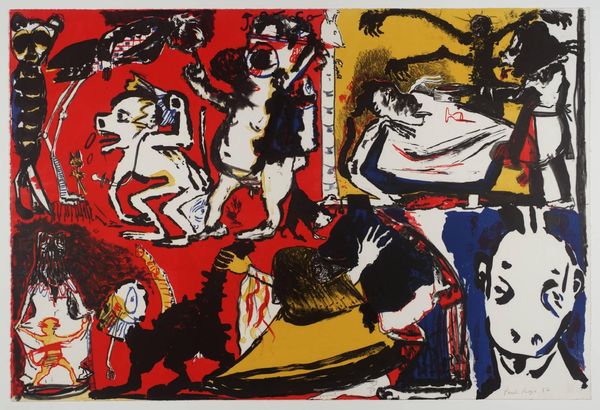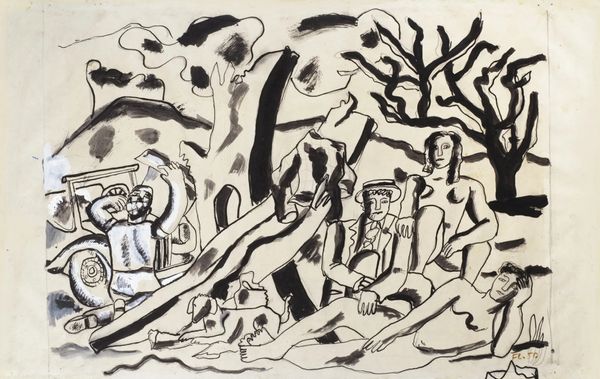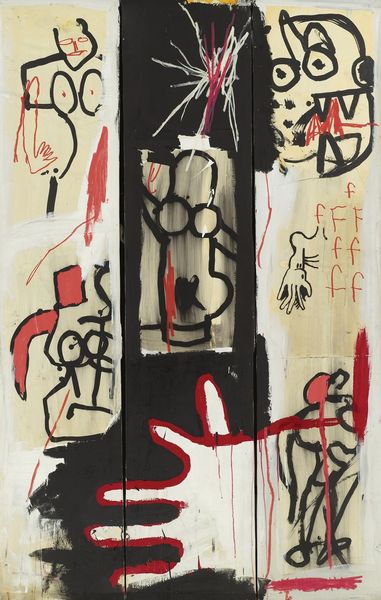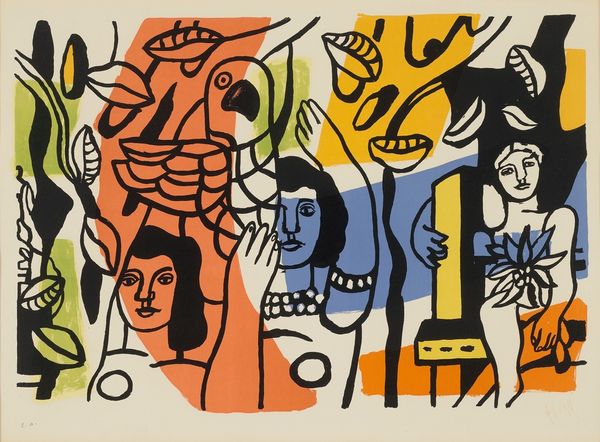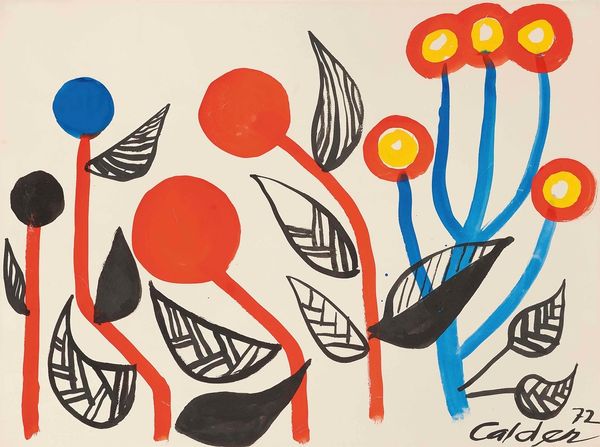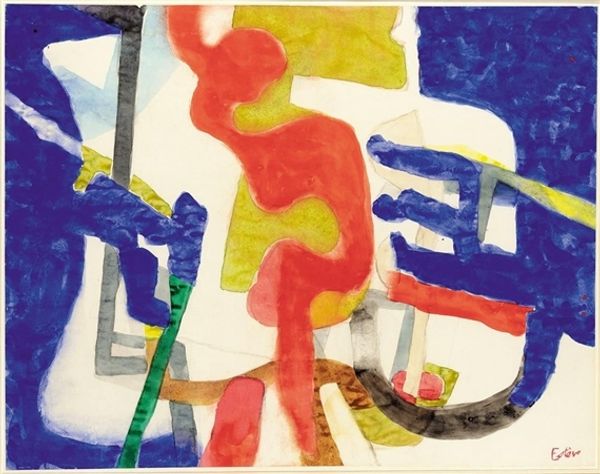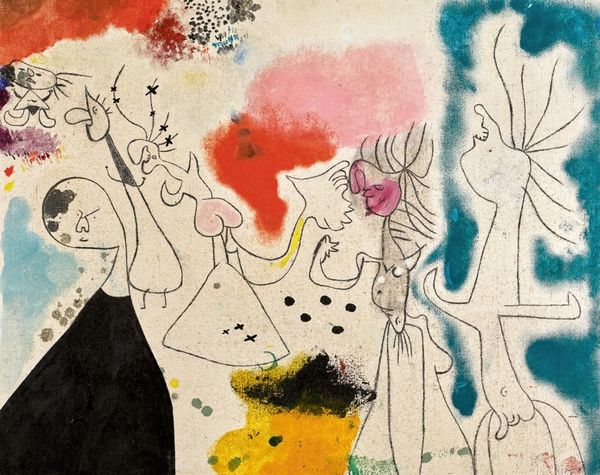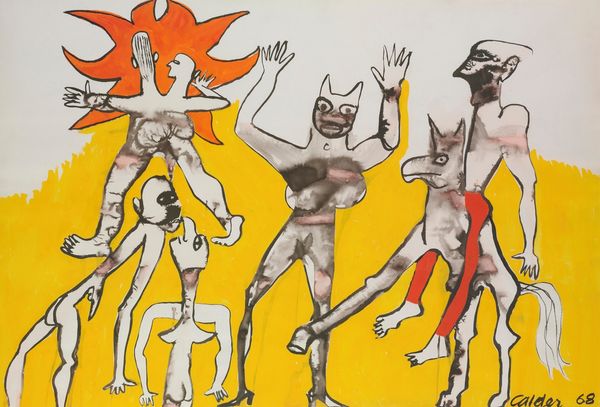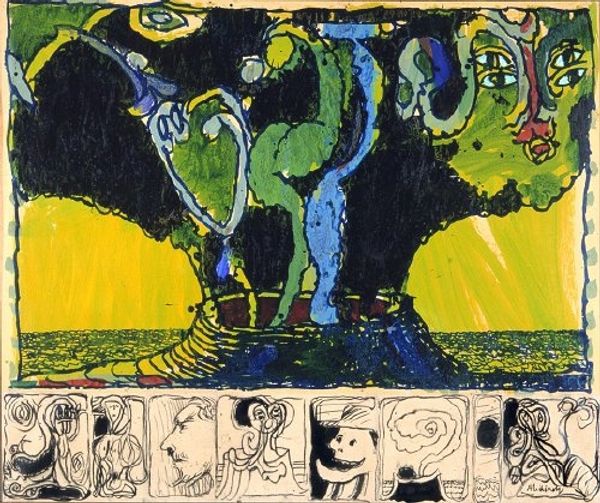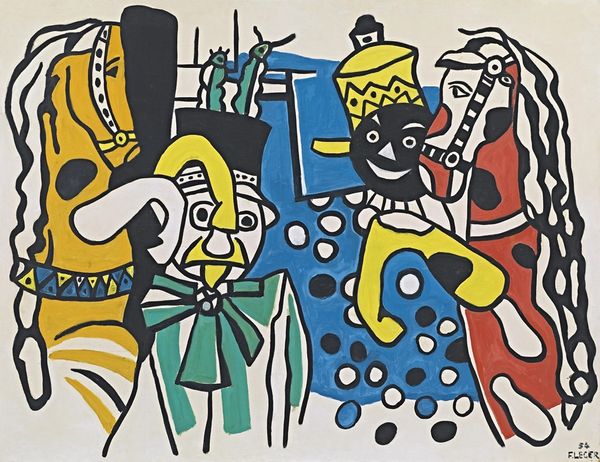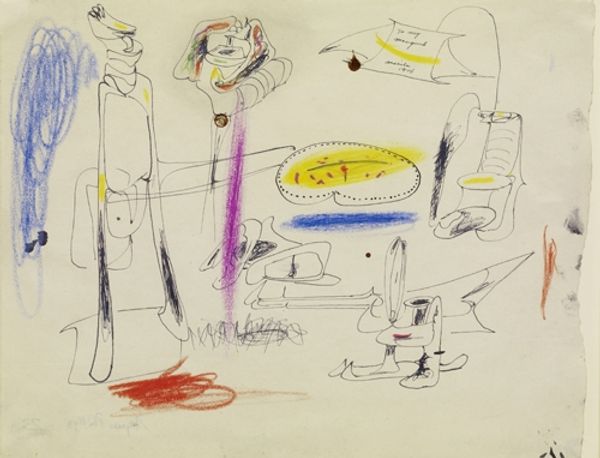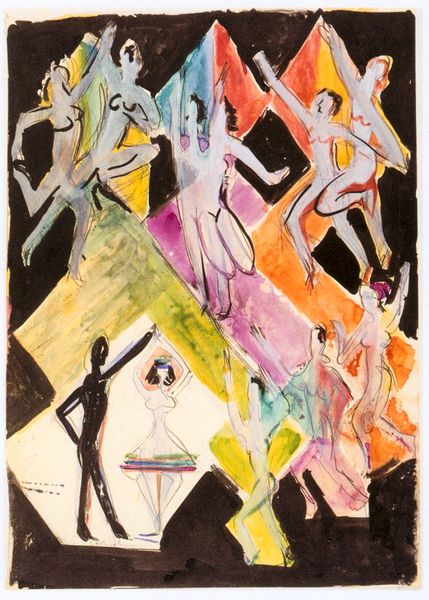
Copyright: Modern Artists: Artvee
Editor: So, this is Alexander Calder's "Chevalier du Moyen-Age," made in 1967, with tempera and ink on paper. It definitely strikes me as playful, almost like a child's interpretation of the Middle Ages. All of the figures are simplified into their base shapes with stark black lines, even cartoonish. How do you interpret this work? Curator: Playful is a great way to put it. It feels like Calder is almost winking at us, doesn’t it? Look at the jaunty way he renders the knight – more abstract than imposing. It is childlike in the best way, full of that free-flowing, uninhibited energy. He takes serious historical themes and deflates them with humor. You almost get the impression that this could have been something drawn by Matisse with his childlike simplicity and joyful playfulness of shape and colour. Why do you think Calder chose such a lighthearted approach for such a grand subject? Editor: Maybe it's about subverting expectations? Knights and the Middle Ages often carry this heavy weight of history and tradition. Calder just strips it all away, leaving the essence of the story. It feels kind of revolutionary, in a gentle way. Curator: Absolutely, the revolution of simplicity, that is. Calder invites us not just to see the image but also to imagine it. What stories emerge for you when you look at that slightly bewildered knight surrounded by, well, all these fantastical characters? The humor disarms you. You see the underlying humanity, maybe? Editor: I see how the humour acts as an invitation. I was so focused on the "naive" style that I nearly overlooked the potential for narrative within this quirky scene. Curator: Precisely! I think Calder's genius lies in that invitation. Editor: It’s a new way of seeing history, as not this concrete story, but almost as malleable as his mobiles. I feel like I'm walking away with a deeper understanding. Thank you.
Comments
No comments
Be the first to comment and join the conversation on the ultimate creative platform.
